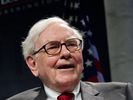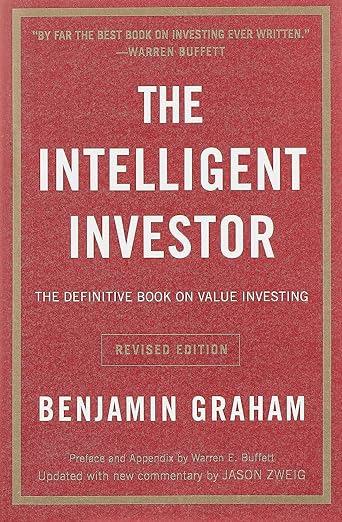How the Superinvestors did it
Time: May 17, 1984. Legendary investor Warren Buffett was making a speech at a seminar at Columbia Business School to celebrate the 50th Anniversary of the publication of Benjamin Graham and David Dodd’s Security Analysis.
A blurb in the article, The Superinvestors of Graham-and-Doddsville (By Warren E. Buffett), based on the speech by Warren Buffett, said: “”Superinvestor” Warren E. Buffett, who got an A+ from Ben Graham in Columbia in 1951, never stopped making the grade. He made his fortunes using the principles of Graham’s and Dodd’s Security Analysis. Here, in celebration of that classic text, he tracks the records of investors who stick to the “value approach” and have gotten rich going by the book.”
First some useful background: Benjamin Graham (May 8, 1894 – September 21, 1976) is the father of value investing, an investment approach that he began teaching at Columbia Business School in 1928 (Wikipedia). The British-born American professional investor was well-known for his book Security Analysis which was published in 1934. Together with co-author David Dodd, he refined his investment approach through various editions of the book. Since its publication, the book has been widely treated as an investment bible in the investment community. Benjamin Graham’s best known disciple is Warren Buffett of Berkshire Hathaway. Warren Buffett, who himself is widely referred to the Wizard of Omaha, once described Benjamin Graham as the second most influential person in his life after his own father. Warren Buffett once said that Security Analysis was an investment road map that he had been following. Another of Benjamin Graham’s famous books is Intelligent Investor, described by Warren Buffett as “the best book about investing ever written”.
In The Superinvestors of Graham-and-Doddsville, Warren Buffett started by posing this question: “Is the Graham and Dodd “look for values with a significant margin of safety relative to prices” approach to security analysis out of date?”
Warren Buffett used the performance track record of a group of investors who had year in and year out beaten the Standard & Poor’s 500 stock index to counter theorists’ belief that it was all due to luck and that there were no undervalued stocks because of the stock market efficiency . Mr Buffett also used an imagined national coin-flipping contest to make his point.
The group of Superinvestors in the Graham-and-Doddsville presented by Warren Buffett included himself, his Berkshire Hathaway partner Charlie Munger and Walter Schloss, Tom Knapp and Bill Ruane. Warren Buffett, Walter Schloss, Tom Knapp and Bill Ruane were the group of four who worked at Graham-Newmann from 1954 through 1956.
This group of successful investors had one common intellectual patriarch, Benjamin Graham, said Warren Buffett. They had gone to different places and bought and sold different stocks and companies, yet they have had a combined record that simply cannot be explained by random chance.
“The common intellectual theme of the investors from Graham-and-Doddsville is this: they search for discrepancies between the value of a business and the price of small pieces of that business in the market,” said Warren Buffett.
“Essentially, they exploit those discrepancies without the efficient market theorist’s concern as to whether the stocks are bought on Monday or Thursday, or whether it is January or July, etc. Incidentally, when businessmen buy businesses, which is just what our Graham & Dodd investors are doing through the purchase of marketable stocks – I doubt that many are cranking into their purchase decision the day of the week or the month in which the transaction is going to occur,” said Mr Buffett. “If it doesn’t make any difference whether all of a business is being bought on a Monday or a Friday, I am baffled why academicians invest extensive time and effort to see whether it makes a difference when buying small pieces of those same businesses. Our Graham & Dodd investors, needless to say, do not discuss beta, the capital asset pricing model, or covariance in returns among securities. These are not subjects of any interest to them. In fact, most of them would have difficulty defining those terms. The investors simply focus on two variables: price and value.”
Mr Buffett said that he selected these men based upon their framework for investment decision-making. “I knew what they had been taught and additionally I had some personal knowledge of their intellect, character, and temperament. It’s very important to understand that this group has assumed far less risk than average..”
“While they differ greatly in style, these investors are, mentally, always buying the business, not buying the stock. A few of them sometimes buy whole businesses. Far more often they simply buy small pieces of businesses. Their attitude, whether buying all or a tiny piece of a business, is the same. Some of them hold portfolios with dozens of stocks; others concentrate on a handful. But all exploit the difference between the market price of a business and its intrinsic value.”
Elsewhere in the text, Warren Buffett said: “I’m convinced that there is much inefficiency in the market. These Graham-and-Doddsville investors have successfully exploited gaps between price and value. When the price of a stock can be influenced by a “herd” on Wall Street with prices set at the margin by the most emotional person, or the greediest person, or the most depressed person, it is hard to argue that the market always prices rationally. In fact, market prices are frequently nonsensical.”
Warren Buffett also explained the need of having a margin of safety. “You also have to have the knowledge to enable you to make a very general estimate about the value of the underlying businesses. But you do not cut it close. That is what Ben Graham meant by having a margin of safety. You don’t try and buy businesses worth $83 million for $80 million. You leave yourself an enormous margin. When you build a bridge, you insist it can carry 30,000 pounds, but you only drive 10,000 pound trucks across it. And that same principle works in investing. “
In his conclusion about the value approach to investment, Mr Buffett said: “I can only tell you that the secret has been out for 50 years, ever since Ben Graham and Dave Dodd wrote Security Analysis, yet I have seen no trend toward value investing in the 35 years that I’ve practiced it…. Ships will sail around the world but the Flat Earth Society will flourish. There will continue to be wide discrepancies between price and value in the marketplace, and those who read their Graham & Dodd will continue to prosper.”
Fast forward to the present. Reflecting the great success of Warren Buffett’s value investment philosophy, Berkshire Hathaway’s 2013 Annual Report showed that “over the last 49 years (that is, since present management took over), book value has grown from US$19 to US$134,973, a rate of 19.7% compounded annually”. These are per-share book values.


